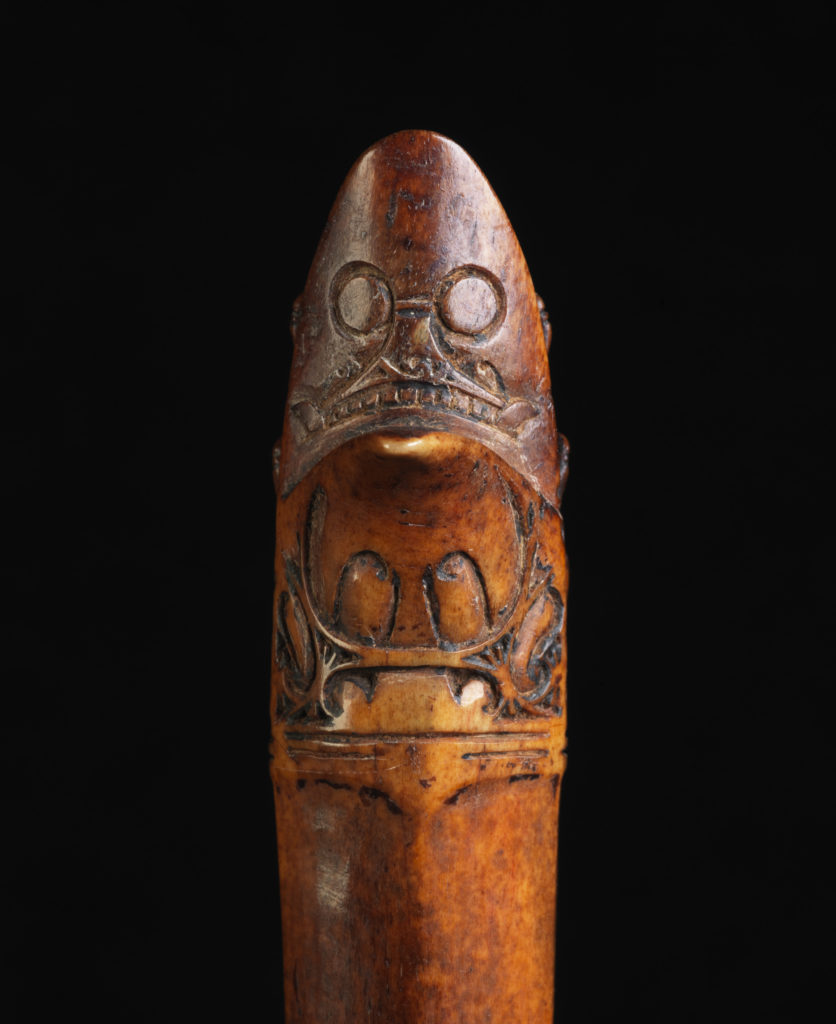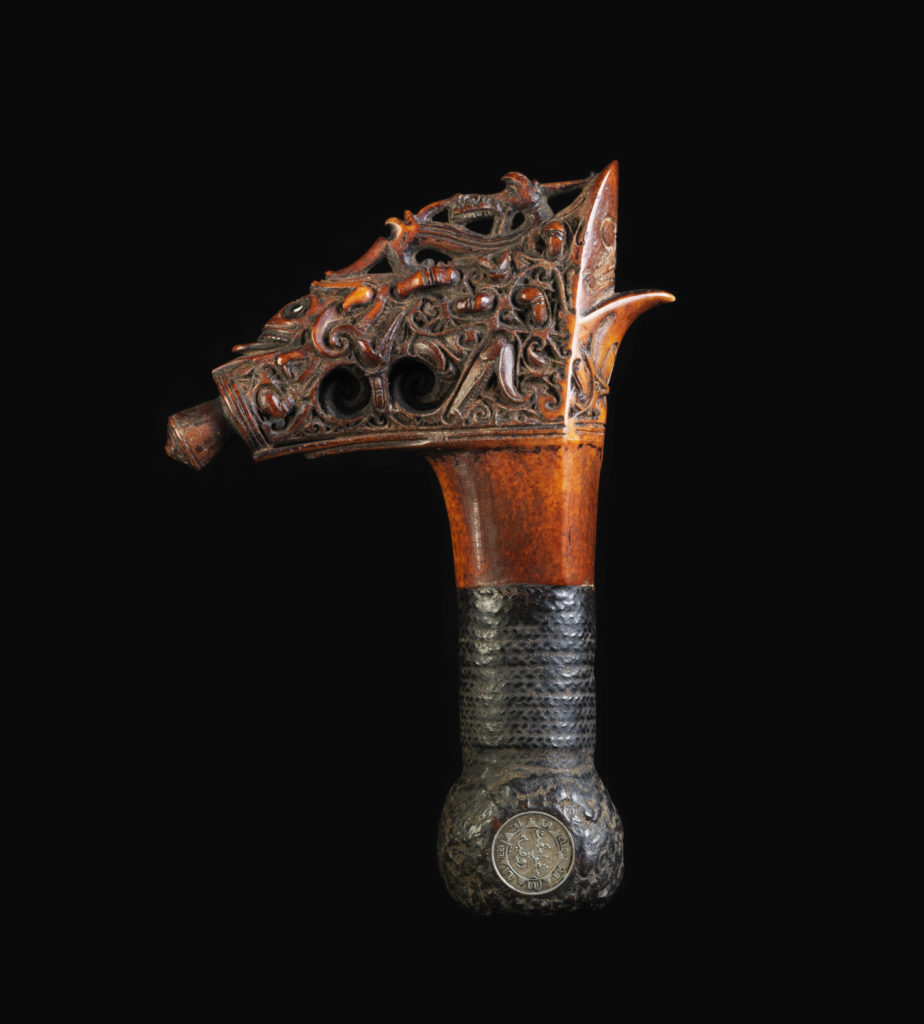Mandau-handle
This is the handle of a jimpul or langgai tinggang from the Iban-Dayak area. The Iban-Dayak are by far the best known and numerically the strongest dayak group today. Iban probably derives from hivan, “wanderer,”. The Iban are based in West Kalimantan, Sarawak, Brunei and Sabah and were once considered aggressive and very mobile headhunters. The art of the Iban is different from that of the other Dayak. This is due to the fact that the Iban are not originally native to Borneo or “arrived” there much later than the other Dayak groups, which is also indicated by their (ethnogenetic) name.
According to the current state of research, the Iban ancestors probably settled in the first half of the second millennium AD from Sumatra in the area around the mouth of the Kapuas River in the vicinity of the present-day city of Pontianak on the southwest coast of Borneo. From there, a gradual migration took place over the centuries to the headwaters of this river, which lies directly on the present Indonesian-Malaysian border. From the middle of the 16th century, the Iban reached the territory of present-day Sarawak, which formally belonged to the Sultanate of Brunei. The expansion of the Iban can be traced back to shifting cultivation, which forced each longhouse community to move on about every ten years in order to gain new rice cultivation areas from the primary jungle. In the east of what would later become Sarawak, the Iban became involved in disputes with the Bidayuh, while in the north were the Kayan settlement areas, with which the Iban also engaged in numerous violent conflicts for control of river systems. During this period, longhouses seem to have been established on both sides due to the increased danger of raids. As part of their sedentariness, the Iban began to make war journeys to more distant areas. This was also necessary in order to comply with the requirement of occasional head hunting without causing discord on “own” land, because in the traditional adat (oral law) feuding among tribesmen is in no way desired or tolerated. Therefore, Malay coastal settlements, Chinese merchant ships and Dayak were attacked as well as more distant Iban settlements. The attacks on Malay and Chinese led to massive counteractions by European colonialists from the middle of the 19th century onwards. The raids on other Dayak established intertribal wars between the different Iban factions as well as between the Iban and other Dayak. This phase of sedentarisation in the heartland on the one hand and the continuing expansion in the outlying areas on the other hand initially took place without external interference, until in 1839 James Brooke appeared and, due to a clever alliance policy with Sarawak, became the local ruler a few years later.
The Iban’s very own parang (swords), which include the nyabor, langgai tinggang and jimpul, are fundamentally different from the mandau of the Kayan and Kenyah. They show clear Malay and Sumatran influences, which in turn are originally due to the presence of the Turks or Turkic peoples in the archipelago during the Ottoman power cenite. The Iban are the only Dayak group (except the Murut) to use curved blades with a symmetrical cross-section. These “sabre-like” swords, which are pure weapons, technically have completely different characteristics than the mandau, whose special cut makes it an efficient tool for woodworking.
This dark patinated handle embodies the powerful, expressive Iban culture at the height of its presence around the middle of the 19th century. The handle is crowned by a stylised dragon; the surfaces are divided into suspended spirals, hornbills, limbs and flukes. A fright mask with a tongue stretched out (defence against evil), inlaid white pearls as eyes form the core motif of the front part, while the body of the handle shows the double spiral as a symbol of the soul’s journey and cyclical refreshment of vitality, also by kajau, the ritual headhunting, in double dual form. One name for this combination is kohong kalunan, which obviously means “head of a man / human”.
Dualism, representing fertility, is at the heart of all Iban art; also in the draping of the captured skulls, which are hung in pairs in the rattan basket in the ideal barrel. This is a pictorial reference to the association of fertility or renewal and head hunting.
| Object | Mandau-handle |
| Culture | Borneo, West, Sarawak, Dayak, Iban (or Kenyah) |
| Time | 19th century |
| Dimensions | Length 18 cm |
| Material | Deer horn, rattan, coin |







